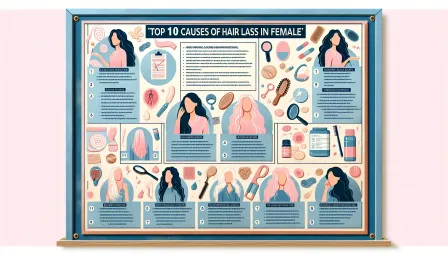Top 10 Baldness Myths Debunked: What You Need to Know

Discover the truth about baldness by debunking common myths. This comprehensive guide offers insightful information for those concerned about hair loss.
Baldness is a common concern that affects millions of people worldwide. While it is a natural part of aging for many, numerous myths have circulated around this topic, often causing unnecessary worry or leading to misguided efforts to combat hair loss. This article aims to debunk the top 10 baldness myths, providing you with accurate information to better understand this condition. Let's dive in!
1. Myth: Baldness Comes Solely from the Mother's Side
A widely held belief is that baldness is inherited only through the mother's side of the family. While it is true that the gene causing androgenetic alopecia (pattern baldness) can be passed down from the mother, genetic factors from both parents can influence hair loss. Therefore, observing the hair patterns of both sides of the family will give a more accurate prediction of one's likelihood to experience baldness.
2. Myth: Wearing Hats Causes Baldness
The notion that frequently wearing hats can lead to baldness is unsupported by scientific evidence. Baldness is mostly due to genetics, hormonal changes, or medical conditions, rather than external mechanical pressures from hats. However, it is important to ensure good hygiene and cleanliness, as dirty hats could cause scalp infections, indirectly affecting hair health.
3. Myth: Hair Loss Occurs Only in Men
While men are commonly associated with baldness due to higher visibility of male pattern baldness, women can also experience significant hair loss. Female pattern baldness, often beginning with thinning hair on the crown, affects many women, especially post-menopause. It is crucial for both men and women to understand their individual risks and seek appropriate treatment.
4. Myth: Stress Directly Causes Permanent Baldness
Stress can indeed contribute to temporary hair loss conditions such as telogen effluvium, where hair falls out after stressful events. However, permanent baldness is generally caused by genetic factors rather than stress alone. Managing stress is important for overall health, but it may not completely prevent genetic hair loss.
5. Myth: Shaving Your Head Makes Hair Grow Back Thicker
This myth is based on the perception that hair appears thicker when it starts growing back after being shaved. Shaving does not alter the thickness, strength, or growth rate of hair follicles. The blunt tips of freshly shaved hair might make it seem coarser, but this effect is temporary and doesn’t influence the hair's inherent properties.
6. Myth: Hair Products and Styling Cause Baldness
Regular use of hair products like gels, sprays, and dyes are commonly thought to lead to baldness. Although certain chemicals can harm hair health or cause temporary hair weakening, they do not usually result in permanent hair loss. Proper hair care and moderation in styling can mitigate any potential damage while maintaining hair integrity.
7. Myth: Brushing Your Hair Frequently Prevents Hair Loss
Frequent brushing is often recommended as a way to prevent hair loss, under the assumption that it stimulates the scalp and increases blood flow. Excessive brushing, however, can cause mechanical damage to the hair and scalp, potentially accelerating hair shedding. Gentle brushing helps with scalp health but is not a prevention strategy for genetic hair loss.
8. Myth: Baldness Is Caused by Poor Circulation
Poor blood circulation is frequently cited as a cause of hair loss, but this is a misconception. Hair follicles receive adequate blood supply even in bald areas. Genetic and hormonal factors are the primary causes of baldness, and interventions focusing solely on improving circulation are unlikely to reverse or prevent hair loss.
9. Myth: Baldness Indicates High Levels of Testosterone
While testosterone plays a role in hair loss, baldness is influenced by the sensitivity of hair follicles to dihydrotestosterone (DHT), a derivative of testosterone. High testosterone levels alone do not cause baldness; instead, it is the interaction between DHT and genetically predisposed hair follicles that predominantly drives the process.
10. Myth: There Is No Effective Treatment for Baldness
Contrary to the belief that baldness is untreatable, several effective treatments are available. Medications like minoxidil and finasteride have been shown to slow hair loss and in some cases stimulate regrowth. Hair transplantation and newer techniques like platelet-rich plasma (PRP) therapy provide additional options for those seeking to address baldness.
Conclusion
Understanding the facts about baldness is crucial for anyone concerned about hair loss. By debunking these common myths, we aim to provide a clearer picture of what truly influences baldness and how it can be managed. If you’re experiencing hair loss, consider consulting with a healthcare professional to explore the most suitable treatment options tailored for your condition.



























